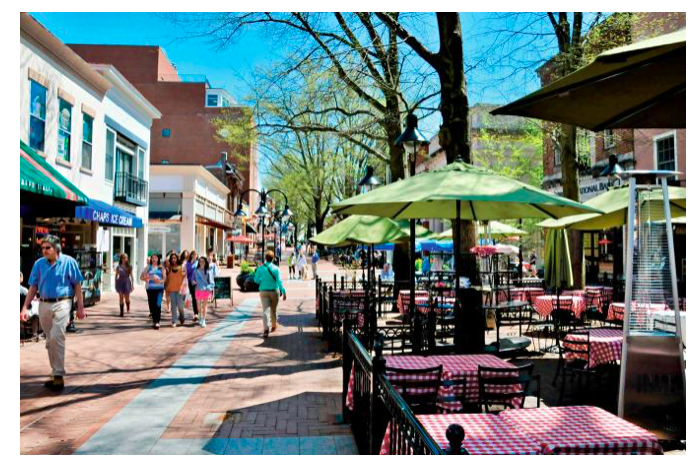
How to see the Virginia Piedmont? Just follow Thomas Jefferson
- Tourism
-
Nov 29
- Share post

Before becoming America’s third president, Thomas Jefferson was in many ways its premier traveler. As ambassador to France, Jefferson developed a passion for fine wines, and he returned to the U.S. with vine cuttings that he planted at his Monticello estate in Virginia. While his enological experiments weren’t very successful, he did create a thirst for the grape in his homeland.
Road-trippers can learn more about Jefferson—both his contributions to the country and his ties to slavery—at his estate and the university he founded, but they shouldn’t stop there. The central Virginia Piedmont, a few hours southwest of Washington, D.C., is a region of rolling foothills ablaze with color in the fall, winding roads that lead to now thriving vineyards, and small towns with big charms (plus tasty pies). Here’s an itinerary for exploration.
This three-day road trip winds through 88 miles of the bucolic Virginia Piedmont a few hours southwest of Washington, D.C.
MAP BY GUILLERMO TRAPIELLO
Stop 1: Humpback Rocks
For spectacular views of the Blue Ridge Mountains, head to Humpback Rocks, a massive greenstone outcrop (at milepost 5.8 of the Blue Ridge Parkway). Start your early morning hike from Mountain Farm Trail, where a living history museum gives a glimpse of Appalachian life in the late 1800s. The climb is steep, but you’ll be rewarded with the sight of the Rockfish and Shenandoah valleys blanketed in kaleidoscopic colors.
Stop 2: Charlottesville
Thomas Jefferson’s vision for an “Academical Village” comes into focus in Charlottesville on the lush University of Virginia Grounds, where faculty and students have lived alongside each other in columned pavilions since classes commenced in 1825. At the heart of the university rises the Rotunda, a UNESCO World Heritage site modeled after the Pantheon in Rome and built to house Jefferson’s vast book collection. Adding to the grandeur of the Grounds are Jefferson’s serpentine walled gardens tucked behind each of the 10 pavilions. Take a stroll over to downtown’s pedestrian mall, eight tree-lined blocks featuring stores such as the Pie Chest, the Impeccable Pig clothing boutique, and Timberlake’s pharmacy with its original soda fountain.
Charlottesville’s outdoor pedestrian mall features one-of-a-kind shops and restaurants.
PHOTOGRAPH BY PHIL SWALLOW PHOTOGRAPHY, ALAMY STOCK PHOTO
Stop 3: Monticello
A self-taught architect and master gardener, Jefferson designed nearly every aspect of Monticello, the mountaintop estate and working plantation where he lived until his death in 1826. Set high above Charlottesville, the mostly intact house brims with Indian artifacts, leatherbound books, world maps, and innovations that saved Jefferson precious time. A walk along Mulberry Row, the main avenue of operations for the 5,000-acre plantation, highlights his dependence on the labor of enslaved people. Don’t miss the exhibit dedicated to Sally Hemings, mother to six of Jefferson’s children, which relates poignant stories told by her son Madison and other family members.
Stop 4: The Clifton
Old meets new at The Clifton inn, built in 1799 for Thomas Mann Randolph and his wife, Martha (a daughter of Jefferson’s). Both antiques and abstract art grace the guest rooms of the recently renovated hundred-acre estate. In the evening, sip cocktails in the Copper Bar before sliding into a velvet banquette in the library/restaurant for local duck, lamb, and vegetables.
Stop 5: Castle Hill Cider
Historic Route 231 winds through miles of quiet hamlets and horse farms. Pull off at Castle Hill Cider, an 18th-century plantation that ferments its drinks from heirloom apples, including the Albemarle Pippin, said to be Jefferson’s favorite and one he planted at Monticello. Try the popular Levity cider, which matures in terra-cotta vessels buried underground and offers hints of black cherry, lemon zest, and caramel.
Stop 6: Gordonsville
In 1840 Gordonsville welcomed the first railcars to central Virginia, transforming the town into a major trading hub. During the Civil War, the same trains delivered wounded soldiers to the Exchange Hotel, a railroad boardinghouse turned receiving hospital. Today the Exchange Hotel and Civil War Medical Museum displays original surgical tools and prosthetic devices, plus accounts of the doctors who by the war’s end had treated some 70,000 men here. Continue south on Main Street to pick up pillows and fine linens at Laurie Holladay Interiors, or dream about decorating your own Virginia country estate with 19th-century furnishings at Annette La Velle Antiques.
Stop 7: Barboursville Vineyards
Jefferson imagined that the wine from his native state would equal the European varietals he coveted. Though the vineyards he planted at Monticello never quite took, he’d be delighted to know that today Virginia has more than 300 wineries. Barboursville Vineyards, one of the region’s earliest and a member of the Monticello Wine Trail, uses estate-grown grapes to create vintages like the award-winning Octagon, a Bordeaux-style blend of Merlot, Cabernet Franc, and Petit Verdot. A short walk from the tasting room takes you to the fire-ravaged ruins of a mansion designed by Jefferson.
Stop 8: The Market at Grelen
The Market at Grelen is set on a sprawling tree farm with 400 varieties in all shapes and sizes. “Being around trees is just healthy,” says co-owner Dan Gregg. Leaf peepers can hike five miles of trails to catch autumn’s array of colors. For the showiest models, Gregg recommends viewing the Japanese maple, Chinese pistache, and American smoke trees. The farm’s orchards invite visitors to pick their own apples, peaches, and other seasonal fruits. These also brighten the café salads, wraps, and ice cream at the market, which hosts hayrides and serenading musicians.
Source: nationalgeographic.com


















